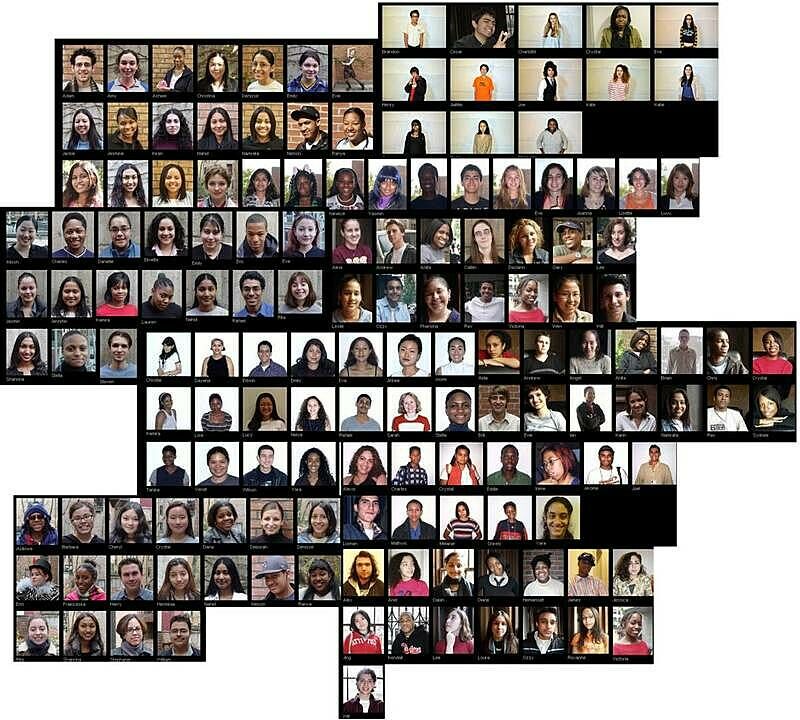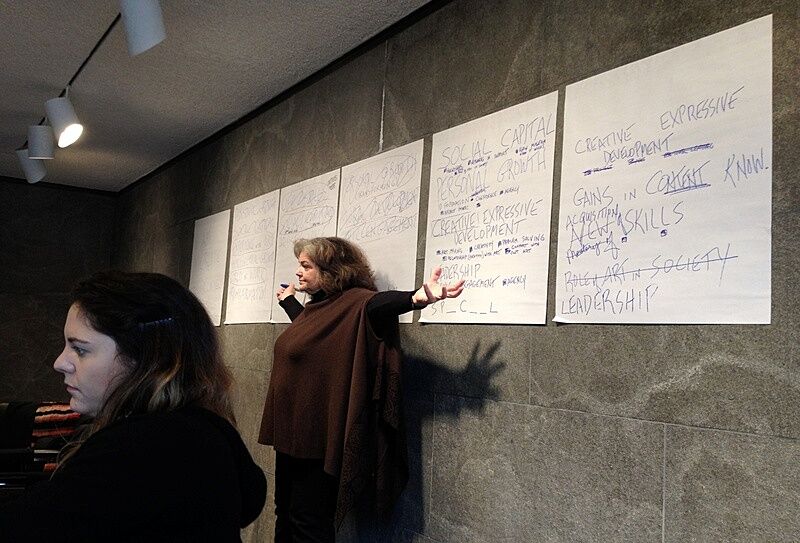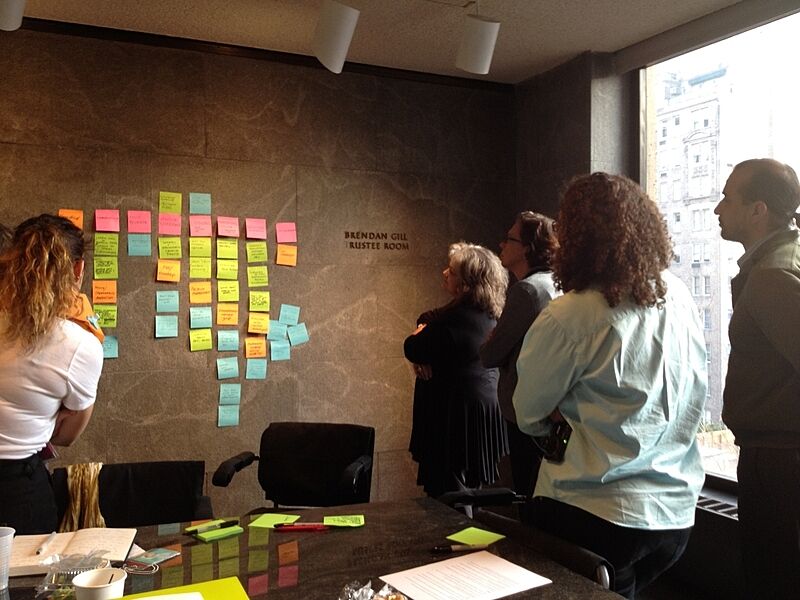Teen Programs Alumni Research Project: First Researcher-Practitioner Institute, December 2011
Mar 12, 2012
In October 2011, the Whitney’s Education department announced its partnership with MOCA, the Walker Art Center, and CAMH, to undertake a collaborative research initiative over the next three years.This study will focus on four long-running programs that engage teens in contemporary art museums, and seeks to document the enduring effects of these programs on the participants, their communities, and the museums themselves. This project is funded by a National Leadership grant from the U.S. Institute of Museum and Library Services. Surprisingly little formal research has been conducted to understand and substantiate the long-term impact of intensive educational experiences for adolescents in the arts. In December 2011, representatives from each institution met in New York for the first of their six Practitioner-Researcher Institutes. Led by a research advisor, Mary Ellen Munley of MEM & Associates, the team exchanged ideas and charted their research objectives at this introductory conference.
Acknowledging the difficulties of conclusively measuring something as abstract as “long-term impact,” the team first identified and defined five outcome areas for individual program participants: arts participation, leadership, personal growth, social capital, and visual and cultural literacy. In other words, do these teens stay connected to arts and cultural organizations later in life? Did the time the teens spent in these programs contribute to identity formation? To address these complex questions—and many more—the team also nominated a group of secondary advisors: a critical friends group. This committee, comprised of nationally recognized experts in the fields of arts education, positive youth development, and social research, will provide additional advice and input as the project continues.
Understanding that each participant’s experience with his or her program was undoubtedly unique, the study will employ a variety of research methodologies over the next three years. In the coming months a survey will be sent to all alumni from each of the partner institutions. This survey will be designed to ascertain how teen programs continue to impact the professional choices, social lives, and self-confidence of participants as they enter adulthood. After the survey has been administered and the results analyzed, the team will conduct in-depth alumni interviews and ask a smaller group of participants to create photo journals to further reflect on their experiences. Researchers from each institution will conduct staff interviews and develop institutional case studies in the hopes of discovering how these programs have benefitted both the museums that implement them and the surrounding communities that support them.
The research team has spent recent months tracking down and reaching out to their alumni—approximately 600 individuals among the four museums—with plans to administer the survey by April 2012. All in existence for many years, these four programs are now teenagers themselves, including the Whitney’s Youth Insights (YI) program, inaugurated in 1997. The Whitney team is now tracking down YI’s almost 200 alumni, and is already receiving a great deal of positive feedback from former YI teens; many are excited to assist with the project. After vetting outcome definitions and a draft survey with the critical friends group, the research team hopes to distribute the survey. Collected data will be shared and analyzed at the second Researcher-Practitioner Institute in July 2012, which will be hosted in Minneapolis, MN by the Walker Art Center.
By Elizabeth Pisano, Education Intern




